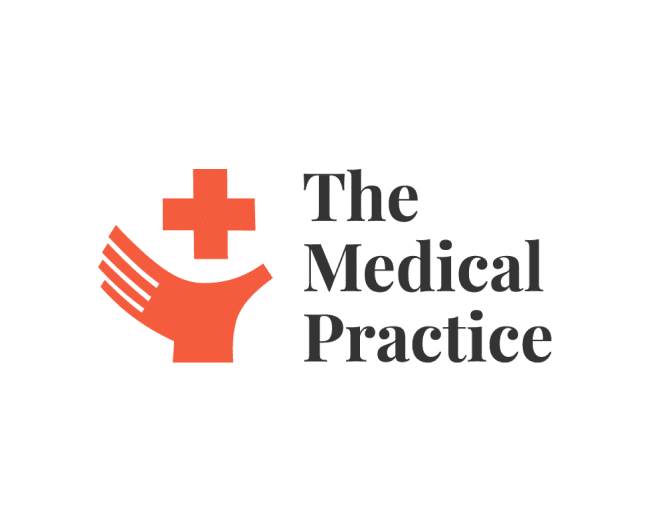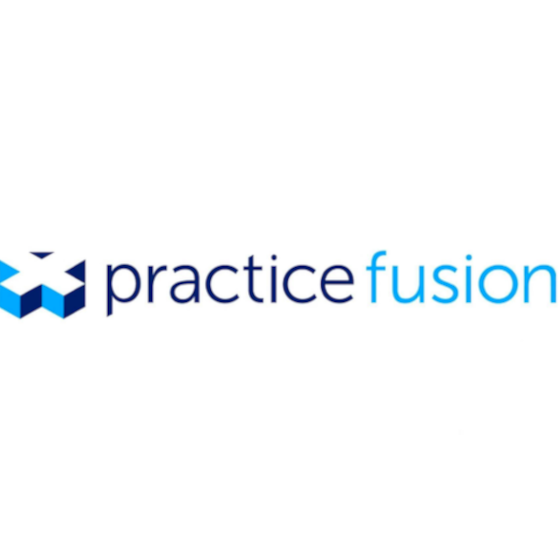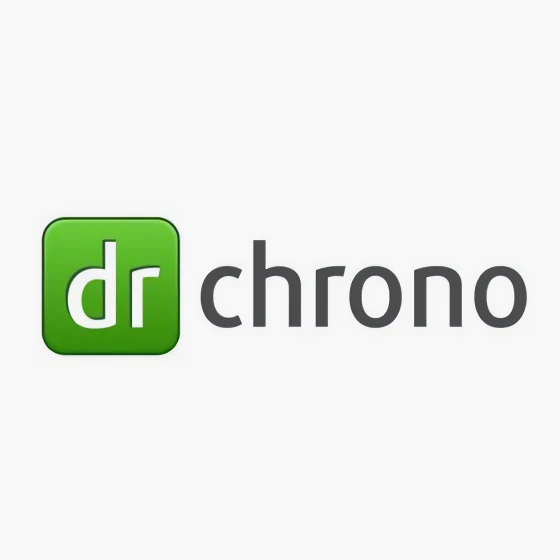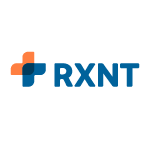10 Best Podiatry EHR Shortlist
Here's my pick of the 10 best software from the 17 tools reviewed.
Our one-on-one guidance will help you find the perfect fit.
Podiatry EHR simplifies biomechanical exam notes and treatment planning, which frees up your team to concentrate on custom orthotic care and surgical prep. Managing imaging and routine care can be challenging, but the proper support can automate workflows and reduce charting errors.
In this article, I compare and review the best podiatry EHR tools to support your buying decision.
Why Trust Our Software Reviews
We’ve been testing and reviewing medical practice software since 2023. As medical practice technology researchers ourselves, we know how critical and difficult it is to make the right decision when selecting software. We invest in deep research to help our audience make better software purchasing decisions.
We’ve tested more than 2,000 tools for different medical practice use cases and written over 1,000 comprehensive software reviews. Learn how we stay transparent & check out our software review methodology.
Best Podiatry EHR Summary
| Tool | Best For | Trial Info | Price | ||
|---|---|---|---|---|---|
| 1 | Best for CRM integration | Not available | From $75/user/month (billed annually) | Website | |
| 2 | Best for online appointment scheduling | Not available | From $25/user/month | Website | |
| 3 | Best for cloud-based convenience | Not available | From $149/user/month (billed annually) | Website | |
| 4 | Best for integrated practice management | Free demo available | From $429/user/month (billed annually) | Website | |
| 5 | Best for mobile EHR functionality | Free demo available | From $199/user/month (billed annually) | Website | |
| 6 | Best for customizable workflows | Not available | From $359/user/month (billed annually) | Website | |
| 7 | Best for patient communication | Not available | Pricing upon request | Website | |
| 8 | Best for comprehensive health management | Not available | From $200/user/month | Website | |
| 9 | Best for multidisciplinary clinics | Not available | From $45/user/month (billed annually) | Website | |
| 10 | Best for personalized patient care | Not available | From $250/user/month | Website |
Best Podiatry EHR Reviews
Pabau is a comprehensive medical practice management software that specializes in CRM integration. It is designed to streamline the operations of medical practices while providing enhanced patient communication through its robust CRM features.
Why I Picked Pabau:
I picked Pabau for this list because of its outstanding capability in customer relationship management (CRM) integration. The software's CRM functionality is more thorough and well-developed than others, helping healthcare providers manage patient interactions more effectively. I believe this makes Pabau the best tool for CRM integration.
Standout Features and Integrations:
Pabau's robust CRM functionality enables healthcare providers to track patient interactions, schedule appointments, and send reminders. It also offers features like electronic medical records (EMR) and online booking. On the integration front, Pabau seamlessly combines with accounting software such as Quickbooks and Xero, adding to its utility.
Pros and cons
Pros:
- Robust EMR features
- Seamless integration with accounting software
- Comprehensive CRM capabilities
Cons:
- May require training to utilize all features fully
- Interface can be complex for new users
- Higher starting price compared to some alternatives
Yocale is a versatile software that primarily offers robust online appointment scheduling capabilities. It supports healthcare providers in managing their bookings efficiently while enhancing the patient experience with easy online booking options.
Why I Picked Yocale:
I chose Yocale because it stands out in its simplicity and effectiveness in online appointment scheduling, which is crucial for a healthcare provider's daily operations. Its functionality around appointment management is efficient and intuitive, which made it unique in my assessment. This matches my 'Best for online appointment scheduling' criteria, making it a compelling selection for this list.
Standout Features and Integrations:
Key features include online appointment booking, reminders, and a patient management system. Furthermore, it allows healthcare providers to send automated appointment reminders to patients, reducing no-shows. Yocale provides integrations with popular platforms such as Google Calendar, Office 365, and Outlook, which offers great versatility.
Pros and cons
Pros:
- Automated reminders reduce no-shows
- Useful integrations with popular platforms
- Efficient online appointment scheduling
Cons:
- Limited customization options
- Interface may not be as modern as some alternatives
- Additional charges for extra features
Practice Fusion is an EHR solution designed to maximize convenience through its cloud-based platform. Its features help podiatry practices deliver efficient care while managing administrative tasks in an accessible, user-friendly environment.
Why I Picked Practice Fusion:
Practice Fusion stood out for its cloud-based approach when selecting tools for this list. Its distinguishing factor is the accessibility and convenience it provides by being a fully online platform. I judged it best for cloud-based convenience because it allows users to access the system anywhere and at any time, which greatly aids in ensuring continuous, efficient patient care.
Standout Features and Integrations:
Practice Fusion offers many valuable features, such as appointment scheduling, electronic prescribing, and charting. Moreover, its telehealth features facilitate remote patient care, which is crucial in the current healthcare landscape. When it comes to integrations, Practice Fusion partners with billing solutions, labs, pharmacies, and imaging centers, all of which add up to smooth and efficient practice operations.
Pros and cons
Pros:
- Telehealth capabilities
- Easy integration with other systems
- Full-featured cloud-based EHR
Cons:
- Interface can be complex for new users
- Setup fee is required
- Annual billing only
AdvancedMD offers a unified solution that combines EHR and practice management. This tool excels in streamlining your practice, letting you manage all aspects, from patient intake to final billing.
Why I Picked AdvancedMD:
AdvancedMD caught my attention due to its deeply integrated practice management and EHR capabilities. Its seamless connection between clinical, operational, and financial data sets it apart, which is key for efficient practice management. I determined it best for integrated practice management because of its unified approach that eliminates the need for multiple tools and allows for smoother operations.
Standout Features and Integrations:
AdvancedMD boasts numerous noteworthy features, including electronic prescribing, billing, appointment scheduling, and patient portal. It also offers telehealth capabilities, enabling providers to offer virtual consultations. In terms of integrations, AdvancedMD connects with many medical billing services, labs, and pharmacies, making your practice more efficient.
Pros and cons
Pros:
- Seamless operational workflow
- Comprehensive suite of features
- Integrated EHR and practice management
Cons:
- Annual billing only
- Requires a steep learning curve
- Higher starting price
DrChrono is a versatile Electronic Health Record (EHR) system that provides doctors with robust functionality from their mobile devices. Its cloud-based design, along with its powerful EHR capabilities accessible via mobile and iPad, make it a strong contender for clinics looking for flexibility and mobility in managing health records.
Why I Picked DrChrono:
When considering various tools, I found DrChrono's approach to mobile EHR functionality uniquely valuable. Its innovative design allows healthcare professionals to carry their workstations in their pockets, distinguishing it from traditional EHR systems—making DrChrono the best option for mobile EHR functionality.
Standout Features and Integrations:
Key features of DrChrono include customizable medical forms, e-prescribing, and seamless medical billing. Additionally, its integrated patient portal and mobile apps enhance patient engagement and workflow efficiency. DrChrono integrates with numerous billing software, lab systems, and other EHR systems, facilitating a smooth flow of information across platforms.
Pros and cons
Pros:
- Integrates well with various billing software and lab systems
- Customizable medical forms aid in personalization
- Powerful mobile EHR functionality
Cons:
- Customization may require a learning curve for some users
- Some users report occasional software glitches
- Pricing might be on the higher end for small practices
Sevocity is a cloud-based electronic health records (EHR) system built to provide healthcare practitioners a reliable platform for managing their daily tasks. It's renowned for offering a high degree of workflow customization, making it an ideal choice for clinics and practices requiring specific workflow arrangements.
Why I Picked Sevocity:
I chose Sevocity primarily for its unique customization capabilities. This stood out to me during my selection process, as it's uncommon for EHR systems to offer such extensive adaptability. I believe Sevocity’s ability to adapt to a wide array of clinical workflows makes it the best tool for customizable workflows in healthcare settings.
Standout Features and Integrations:
Sevocity offers features such as E-prescribing, custom forms, lab and imaging integration, and patient portal. Its exceptional customization allows workflows to be tailored according to the unique needs of different practices. The platform integrates seamlessly with other popular health IT systems and third-party apps to enhance its functionality and adaptability.
Pros and cons
Pros:
- Seamless integration with other health IT systems and apps
- Includes a variety of useful features for practices
- Excellent degree of workflow customization
Cons:
- Initial setup can be time-consuming
- The user interface may feel outdated compared to some competitors
- Pricing could be steep for smaller practices
Klara is an innovative communication platform designed to simplify and enhance the patient-practitioner interaction process in the healthcare industry. The tool works by centralizing all patient communications into one secure platform, earning its reputation as the top choice for patient communication.
Why I Picked Klara:
I judged Klara a particularly compelling option due to its focus on streamlining communication between healthcare providers and patients. Its ability to aggregate various communication channels into a singular platform distinguishes it from other contenders. Because of these attributes, I have determined that Klara is the best tool for patient communication.
Standout Features and Integrations:
Klara’s key features include secure messaging, video visits, and automated patient outreach. These features offer a comprehensive communication suite that caters to the demands of modern healthcare delivery. For integrations, Klara can connect with various EHRs, billing systems, and lab systems, which makes it a versatile addition to any healthcare setup.
Pros and cons
Pros:
- Integrates with various EHRs, billing systems, and lab systems
- Offers secure messaging and video visit capabilities
- Streamlines patient-practitioner communication
Cons:
- May require training to utilize all features fully
- Some users report the user interface can be improved
- Lack of transparent pricing information
Intergy is a robust EHR system that takes your health management efforts to the next level. It integrates seamlessly with your practice, offering a range of features to enhance patient care and streamline administrative tasks.
Why I Picked Intergy:
I chose Intergy for its rich features and ability to provide comprehensive health management. Its standout trait is its impressive capability to merge various aspects of a podiatry practice into one cohesive system. I believe it's best for comprehensive health management because it offers a unified platform where clinicians can access all the necessary tools in one place, saving time and enhancing care delivery.
Standout Features and Integrations:
Intergy comes packed with numerous beneficial features, including appointment scheduling, billing, reporting, and telehealth capabilities. Its intuitive patient portal facilitates easy communication between patients and providers, significantly improving the patient experience.
As for integrations, Intergy flawlessly syncs with various practice management tools, lab systems, and pharmacies, ensuring a smooth workflow within your practice.
Pros and cons
Pros:
- Telehealth capabilities
- Seamless integration with other software
- Comprehensive feature set
Cons:
- A minimum of 5 seats required
- Base fee included in the monthly cost
- Higher starting price
Cliniko is a comprehensive cloud-based practice management software that serves health professionals worldwide. It provides features like appointment scheduling, treatment notes, and online bookings, contributing to seamless operational efficiency. It is particularly suitable for multidisciplinary clinics because of its ability to accommodate different clinicians and specialty-specific workflows.
Why I Picked Cliniko:
Cliniko caught my attention due to its adaptability in managing varied healthcare disciplines under one roof, hence my decision to select it. It provides a flexible platform to support different types of healthcare practitioners, from physiotherapists to psychologists. Therefore, for multidisciplinary clinics that require software capable of handling diverse workflows, I believe Cliniko is the best pick.
Standout Features and Integrations:
Cliniko has robust features, including appointment reminders, online bookings, and treatment note templates, which can be customized to suit different practices. One of the standout features is the ability to manage different clinician schedules under one platform. As for integrations, Cliniko connects with key applications like Xero, Mailchimp, and Physitrack to enhance its functionality.
Pros and cons
Pros:
- Integration with essential applications like Xero and Mailchimp
- Robust features that can be customized to different practices
- Adaptability to varied healthcare disciplines
Cons:
- Features may be overwhelming for beginners and require training to master
- Some users report occasional lags in the software
- Pricing can be relatively high for small practices
ChartPerfect is an electronic health record (EHR) system that enables tailored patient care. This tool has been built to assist healthcare providers in creating unique care plans for each patient.
Why I Picked ChartPerfect:
In the wide field of EHRs, ChartPerfect stood out for its strong emphasis on personalized patient care. I felt drawn to its capabilities in assisting practitioners in crafting custom care plans based on patient needs. This aligns perfectly with my criteria for 'best for personalized patient care,' and it's why I felt compelled to include it in my selection.
Standout Features and Integrations:
Notable features of ChartPerfect include charting, e-prescribing, a patient portal, patient charts, and personalized treatment plans. It also supports the creation of individualized healthcare plans with interactive care maps. ChartPerfect integrates with leading practice management solutions, billing systems, and laboratory services to provide a well-rounded EHR.
Pros and cons
Pros:
- Robust integrations with other healthcare solutions
- Comprehensive feature set
- Enables personalized care plans
Cons:
- Initial setup might take time
- Possible learning curve for new users
- Additional costs for certain features
Other Podiatry EHR Tools
Below is a list of additional podiatry EHR. While these did not make the cut to the top 10, they’re definitely worth checking out.
- Kareo Clinical
For seamless patient engagement
- Power Diary
For telehealth capabilities
- PrognoCIS
Good for comprehensive EHR with podiatry-specific ICD codes
- Praxis
Good for AI-driven, template-free podiatry EHR
- RevenueXL
Good for specialized podiatry EHR with telemedicine capabilities
- NextGen Office
Good for podiatry-specific workflows and documentation
- ModMed
Good for cloud-based podiatry EHR functionality
Podiatry EHR Selection Criteria
When selecting the best podiatry EHR to include in this list, I considered common buyer needs and pain points like managing patient records efficiently and ensuring compliance with healthcare regulations. I also used the following framework to keep my evaluation structured and fair:
Core Functionality (25% of total score)
To be considered for inclusion in this list, each solution had to fulfill these common use cases:
- Manage patient records
- Schedule appointments
- Handle billing and invoicing
- Track patient treatment plans
- Ensure compliance with regulations
Additional Standout Features (25% of total score)
To help further narrow down the competition, I also looked for unique features, such as:
- Customizable templates
- Advanced analytics and reporting
- Integration with wearable devices
- Telemedicine capabilities
- Automated patient reminders
Usability (10% of total score)
To get a sense of the usability of each system, I considered the following:
- Intuitive user interface
- Easy navigation
- Minimal learning curve
- Responsive design
- Quick access to support
Onboarding (10% of total score)
To evaluate the onboarding experience for each platform, I considered the following:
- Availability of training videos
- Interactive product tours
- Access to webinars
- Use of chatbots for guidance
- Pre-built templates for setup
Customer Support (10% of total score)
To assess each software provider’s customer support services, I considered the following:
- 24/7 support availability
- Multiple contact options
- Knowledgeable support staff
- Quick response times
- Comprehensive help center
Value For Money (10% of total score)
To evaluate the value for money of each platform, I considered the following:
- Competitive pricing
- Range of features included
- Flexible pricing plans
- No hidden fees
- Discounts for long-term use
Customer Reviews (10% of total score)
To get a sense of overall customer satisfaction, I considered the following when reading customer reviews:
- Overall satisfaction ratings
- Commonly reported issues
- Praise for specific features
- Feedback on usability
- Comments on customer support quality
How to Choose Podiatry EHR
It’s easy to get bogged down in long feature lists and complex pricing structures. To help you stay focused as you work through your unique software selection process, here’s a checklist of factors to keep in mind:
| Factor | What to Consider |
|---|---|
| Scalability | Consider if the software can grow with your practice. Will it handle more patients or users as you expand? Check if there are limits on data storage or user accounts. |
| Integrations | Look for compatibility with existing tools like billing systems or patient management software. Ensure it connects smoothly with your current tech stack. |
| Customizability | Assess if you can tailor the system to your specific workflows. Can you adjust templates or reports to fit your practice's needs? |
| Ease of use | Evaluate if your team can learn it quickly. Is the interface intuitive? Avoid tools that require extensive training to operate. |
| Implementation and onboarding | Determine the time and resources needed to get started. Are there training materials or support to help your team transition smoothly? |
| Cost | Compare pricing models and see what's included. Watch for hidden fees and consider whether the cost aligns with your budget and expected ROI. |
| Security safeguards | Ensure the software protects patient data with encryption and complies with healthcare regulations. Check for regular security updates and audits. |
What Is Podiatry EHR?
Podiatry EHR is digital health record software designed for foot and ankle care. It offers image annotation, orthopedic charting, and custom templates. Podiatrists use it to enhance clinical workflows and patient documentation.
Features of Podiatry EHR
When selecting podiatry EHR, keep an eye out for the following key features:
- Patient records management: Centralizes patient information, making it easy to access and update medical histories.
- Appointment scheduling: Simplifies booking and managing patient appointments, reducing scheduling conflicts.
- Billing and invoicing: Automates billing processes and generates invoices, streamlining financial tasks.
- Compliance tracking: Ensures adherence to healthcare regulations, reducing the risk of non-compliance.
- Customizable templates: Allows you to tailor documentation to specific practice needs, enhancing efficiency.
- Telemedicine capabilities: Enables remote consultations, offering convenience for both patients and practitioners.
- Automated patient reminders: Sends reminders for appointments or medication, improving patient engagement.
- Advanced analytics and reporting: Provides insights into practice performance, aiding in decision-making.
- Integration with existing systems: Connects with other tools like billing or patient management software for seamless operations.
- Security safeguards: Protects patient data with encryption and regular security updates.
Benefits of Podiatry EHR
Implementing podiatry EHR provides several benefits for your team and your business. Here are a few you can look forward to:
- Improved efficiency: Automates tasks like billing and scheduling, freeing up time for patient care.
- Enhanced patient care: Centralized records ensure quick access to patient histories, aiding in better treatment decisions.
- Regulatory compliance: Compliance tracking features help meet healthcare regulations, minimizing legal risks.
- Increased patient engagement: Automated reminders keep patients informed and involved in their care process.
- Better decision-making: Advanced analytics provide insights into practice performance, supporting informed business decisions.
- Cost savings: Reduces administrative overhead by streamlining operations, leading to financial benefits.
- Remote accessibility: Telemedicine capabilities allow for consultations beyond the physical office, expanding service reach.
Costs and Pricing of Podiatry EHR
Selecting podiatry EHR requires an understanding of the various pricing models and plans available. Costs vary based on features, team size, add-ons, and more. The table below summarizes common plans, their average prices, and typical features included in podiatry EHR solutions:
Plan Comparison Table for Podiatry EHR
| Plan Type | Average Price | Common Features |
|---|---|---|
| Free Plan | $0 | Basic patient records management, limited scheduling, and basic support. |
| Personal Plan | $30-$50/user/month | Patient records management, appointment scheduling, billing, and email support. |
| Business Plan | $60-$100/user/month | Advanced scheduling, billing and invoicing, compliance tracking, and analytics. |
| Enterprise Plan | $120-$200/user/month | Customizable templates, telemedicine capabilities, advanced analytics, and 24/7 support. |
Podiatry EHR (FAQs )
What are the benefits of using a podiatry-specific EHR tool?
Using a podiatry-specific EHR tool brings several benefits, including:
- Tailored Functionality: These tools come with podiatry-specific templates and functions that standard EHRs may not offer.
- Improved Efficiency: With podiatry-specific features, physicians can work more efficiently, reducing paperwork or system navigation time.
- Enhanced Patient Care: EHRs allow immediate access to patient histories, resulting in more accurate diagnoses and personalized care plans.
- Better Communication: Many EHR tools offer telemedicine capabilities for virtual consultations and follow-ups.
- Regulatory Compliance: Podiatry EHR tools ensure your practice complies with healthcare regulations such as HIPAA.
How much do podiatry EHR tools usually cost?
The cost of podiatry EHR tools varies widely depending on the specific tool and its features. The pricing model can range from a one-time purchase price to a monthly or annual subscription fee, often on a per-user basis.
What are the common pricing models for these tools?
The pricing models for podiatry EHR tools often include the following:
- Per user/Per month: Each user is charged a monthly fee.
- Perpetual license: A one-time fee gives you the license to use the software indefinitely.
- Subscription-based: An ongoing monthly or annual fee gives you access to the software.
What is the typical range of pricing for these tools?
The pricing of podiatry EHR tools can start as low as $100 per user per month and go up to several hundred dollars per user per month. However, these prices can vary greatly based on the size of the practice and the specific features required.
Which are the cheapest and the most expensive podiatry EHR tools?
The pricing for podiatry EHR tools can range widely. On the lower end, tools like DrChrono offer monthly plans starting at around $200 per user. On the higher end, options like NextGen Healthcare can cost upwards of $500 per user per month.
Are there any free podiatry EHR tools available?
Free EHR tools are quite rare, and even free ones often come with limited functionality or costs associated with additional features or services. However, some EHR tools may offer a free trial period, which can be a great way to test the tool before committing to a paid plan.
Does the price of podiatry EHR tools include updates and support?
Most podiatry EHR tools include updates and support in their pricing. However, confirming this before purchasing is always best, as some might charge additional fees for these services.
Are there any hidden costs associated with these tools?
While many providers are upfront about their pricing, there can sometimes be additional costs that are not included in the initial pricing. These could include costs for training, data migration, additional modules or features, and ongoing support or updates. It’s always best to clarify what is included in the price before deciding.Table Of Contents – Options
What Next?
To stay updated on the latest trends, best practices, and solutions related to your medical practice, subscribe to The Medical Practice newsletter.
















![Pabau screenshot - 17 Best Podiatry EHR Systems for 2025 [My Reviews]](https://themedicalpractice.com/wp-content/cache/themedicalpractice.com/static/static.crozdesk.com/web-app-library-categories-providers-screenshots-002-695-053-pub-pabau-screenshot-1723196824.png)
![Yocale screenshot - 17 Best Podiatry EHR Systems for 2025 [My Reviews]](https://themedicalpractice.com/wp-content/cache/themedicalpractice.com/static/static.crozdesk.com/web-app-library-categories-providers-screenshots-002-695-052-pub-yocale-screenshot-1723196821.png)
![Practice Fusion screenshot - 17 Best Podiatry EHR Systems for 2025 [My Reviews]](https://themedicalpractice.com/wp-content/cache/themedicalpractice.com/static/static.crozdesk.com/web-app-library-categories-providers-screenshots-002-625-805-pub-practice-fusion-screenshot-1723196807.png)
![AdvancedMD screenshot - 17 Best Podiatry EHR Systems for 2025 [My Reviews]](https://themedicalpractice.com/wp-content/cache/themedicalpractice.com/static/static.crozdesk.com/web-app-library-categories-providers-screenshots-002-624-938-pub-advancedmd-screenshot-1723196816.png)
![DrChrono screenshot - 17 Best Podiatry EHR Systems for 2025 [My Reviews]](https://themedicalpractice.com/wp-content/cache/themedicalpractice.com/static/static.crozdesk.com/web-app-library-categories-providers-screenshots-002-598-042-pub-drchrono-screenshot-1723196839.png)
![Sevocity screenshot - 17 Best Podiatry EHR Systems for 2025 [My Reviews]](https://themedicalpractice.com/wp-content/cache/themedicalpractice.com/static/static.crozdesk.com/web-app-library-categories-providers-screenshots-002-625-736-pub-sevocity-screenshot-1723196828.png)
![Klara screenshot - 17 Best Podiatry EHR Systems for 2025 [My Reviews]](https://themedicalpractice.com/wp-content/cache/themedicalpractice.com/static/static.crozdesk.com/web-app-library-categories-providers-screenshots-002-600-559-pub-klara-screenshot-1723196833.png)
![Intergy screenshot - 17 Best Podiatry EHR Systems for 2025 [My Reviews]](https://themedicalpractice.com/wp-content/cache/themedicalpractice.com/static/static.crozdesk.com/web-app-library-categories-providers-screenshots-002-604-961-pub-intergy-screenshot-1723196804.png)
![Cliniko screenshot - 17 Best Podiatry EHR Systems for 2025 [My Reviews]](https://themedicalpractice.com/wp-content/cache/themedicalpractice.com/static/static.crozdesk.com/web-app-library-categories-providers-screenshots-002-605-710-pub-cliniko-screenshot-1723196827.png)
![ChartPerfect screenshot - 17 Best Podiatry EHR Systems for 2025 [My Reviews]](https://themedicalpractice.com/wp-content/cache/themedicalpractice.com/static/static.crozdesk.com/web-app-library-categories-providers-screenshots-002-600-301-pub-chartperfect-screenshot-1723196819.png)